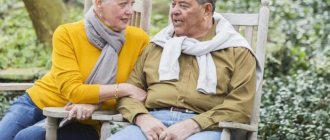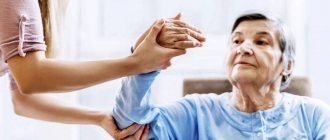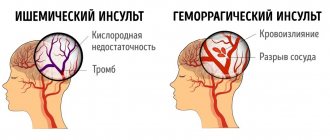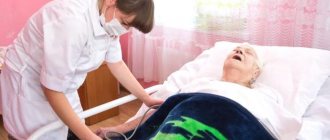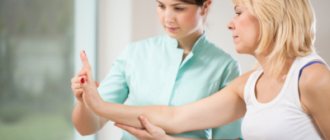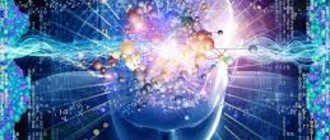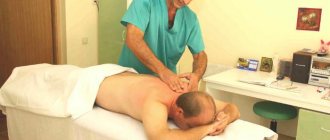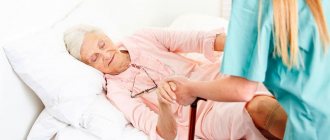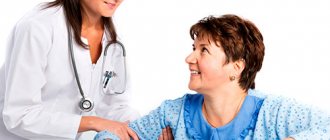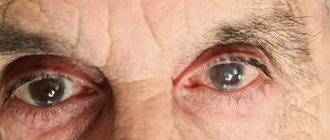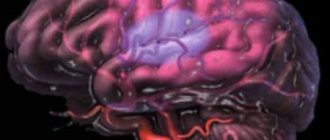Stroke is a disaster that can strike at any age. Increasingly, it is faced not only by the elderly, but also by people under forty who have many years of life ahead of them. Life after a stroke is a completely new and difficult experience for a person. In this article we will tell you what to do after a stroke, we will analyze the possibilities and limitations.
How to live a full life after a stroke?
Life doesn't end after a stroke. It can be almost full-fledged, filled with work, travel and entertainment. But this depends on many factors: the severity of the blow, the patient’s condition after the stroke, his mood, concomitant diseases, and proper rehabilitation.
The faster medical assistance is provided, the easier the consequences. It is most effective in the first 3–5 hours. If you notice signs of a stroke in yourself or your loved ones, call an ambulance immediately.
Complete extraction is not always possible. But the patient can adapt and become independent.
A prerequisite for recovery is long-term rehabilitation. Doctors recommend starting it on the first day - the patient needs to move, try to sit down.
Recovery continues both in the hospital and at home. For people with minor injuries, it is enough to endure some restrictions during this period: do not smoke, eat right, and follow all the doctor’s prescriptions.
Patients with more severe injuries may permanently lose some function, but rehabilitation will help them adapt to these changes.
Using a lot of energy while swimming
Recently, cases of stroke in overweight people have become more frequent. Due to the large amount of fat and insufficient exercise, the heart is simply not able to bear the load.
Having survived a stroke, it is most difficult for such people to recover, since even the simplest physical exercises are given to them with great difficulty. These are the people who should take up swimming.
Since water has a high conductivity of heat, the body is required to expend more energy. For example, if you swim for three minutes in water with a temperature of +24 degrees, your metabolism accelerates by about 70%. Accordingly, it turns out that when performing some exercises in water, a person spends several times more energy than on land. It is for this reason that overweight people, and even more so if they have heart problems, cannot do without swimming.
Hemorrhagic and ischemic strokes: which one is more dangerous?
Hemorrhagic stroke is accompanied by rupture of blood vessels in the brain. Because of this, hemorrhage and swelling of the organ occurs. This type is the most dangerous and difficult to restore. The person's condition is very serious. Hemorrhagic accounts for twenty percent of the total number of strokes. Most of the survivors become disabled.
The ischemic type is more common. When it occurs, blood vessels become clogged and blood circulation in any part of the brain is disrupted. Because of this, cells are destroyed and the patient's body functions are impaired.
Memory recovery
Memory restoration occurs through constant training using simple exercises. For example:
- Learning easy children's poems . First you need to memorize line by line, then stanza by stanza. Gradually the size of the poem can increase. It is good that during the process of memorization the patient bends his fingers, this will form additional associations.
- Replaying past events . The patient may describe events of the past day or more recent events. It is imperative that the memories are only positive.
- As your memory is restored, you can move on to solving crossword puzzles and memorizing short texts . The exercises can be done in any setting, such as at lunch or while walking.
Help and support from relatives is an important factor for recovery
Doctors emphasize that the support of relatives and friends is extremely important during the rehabilitation period. Households contribute to a quick recovery: they help with household chores and gymnastics. The patient benefits from communication to restore speech.
During this period, loved ones need to show sensitivity and attention, but at the same time, patience and perseverance. To fully recover, the patient must train skills and develop damaged parts of the body. But often he only wants to lie down and does not understand why he needs to move. And those around him indulge him in this. Relatives should soberly assess his condition and not overdo it with care. A person after a stroke, if he is able, is recommended to eat, walk to the toilet, and take care of himself. Then he will sooner return to a full life.
It is useful for the patient to discuss his condition with loved ones. This helps avoid depression after illness. To restore speech and memory, they talk to a person about the past, recall incidents from life, and look at photographs.
Daily home treatments
You can do quite healthy activities at home. They allow you to spend your day more fully and move in accordance with your energy resources.
You may not be able to do everything you did before the attack. Therefore, it is important to plan your day, think about your own needs, as well as the needs of those who live at home nearby.
It is worth planning in advance daily tasks that the patient can complete independently or even with some help from start to finish. You should also think about the time it may take to complete the tasks presented.
If you feel tired, you can try to do the most energy-intensive tasks throughout the day or even the week when you have more energy and desire, but you should remain flexible and plan your rest time rather than working until exhaustion.
You need to try to be as active as possible. You can build short but frequent periods of time throughout the day that will allow you to practice any of the exercises recommended for doing at home. Also, whenever possible, you should try to continue to pursue your hobbies, interests, social and family obligations.
Depression after an illness
A sudden stroke is a blow not only to the body, but also to the psyche. Often patients and their relatives become depressed. A person experiences despondency and anger because he has lost his usual skills, cannot work, support his family, or do what he loves. He becomes irritable and whiny, transmitting his mood to everyone around him. This affects his relationship with his family. It is difficult for them to get used to the new situation and be patient.
Depression after a stroke is common, affecting up to half of all patients. It appears both due to the psychological consequences of the disease and due to brain damage.
During this time, it is important to remember that most problems are real, but temporary. The quality and speed of rehabilitation depends on the patient’s mood. The patient and his relatives are recommended to consult with a psychologist. In severe cases, the doctor refers the patient to a psychiatrist for treatment with antidepressants. Remember that there is nothing wrong with this. Mental health is just as important as physical health.
Need to keep in touch
Some people, after suffering a stroke, begin to feel damaged and too changed. This can lead to a reluctance to see friends or go out or engage in any social activities. In such cases, starting communication is an important step in recovery from a stroke.
A stroke survivor may find it difficult to get to places where family and friends go because of physical problems. In such cases, it may seem easier to stay home and not see anyone. But this can lead to isolation, loneliness and low mood, and sometimes severe depression. For such situations, there is a solution to overcome practical difficulties, for example, with the support of others or the use of a wheelchair if it helps with mobility. It is important to try to stay in touch with your loved ones, friends, you can encourage them to visit or, if the patient can manage himself, it is important to plan short trips, even with outside support.
New friendships and new social activities may seem challenging at first, but meeting new people can be very rewarding. Many people find that being in the company of other people who have had a stroke is an extremely helpful way to share experiences and information.
It is worth remembering that you need to stay positive, maintain active and friendly relationships, which is an important part in the recovery process.
Factors influencing life expectancy after stroke
The quality and length of life depend on several factors:
- Danger of recurrent hemorrhage. A second blow reduces life expectancy to 2–3 years.
- Type of impact. With the hemorrhagic type, the likelihood of death is higher
- Extent of damage: with large damage, the lifespan is reduced.
- Developing complications lead to the formation of other symptoms that worsen the quality of life.
- General health.
- Presence of paralysis: they contribute to the formation of blood clots, increasing the risk of another stroke.
- Patient safety. Due to lack of coordination and weakness, he may get injured.
Lifestyle after a stroke
In order to recover as much as possible, the patient needs to change his lifestyle. The first is the mandatory and regular use of all medications prescribed by the doctor.
Regular physical activity is very important. In addition to special gymnastics, it is useful for the patient to engage in walking and moderate activity every day - playing with children or grandchildren, pets, cleaning, gardening, riding public transport. Sometimes light sports are recommended: patients go to the pool or do yoga. If there are no problems with coordination, cycling is possible. Even if a person moves in a wheelchair, he can exercise with dumbbells and do special exercises.
To protect yourself from a second blow, you need to eliminate risk factors. This:
- excess weight;
- passive lifestyle;
- smoking and alcohol;
- stress;
- high pressure.
Is it possible to smoke after a stroke? It is forbidden. Old habits will have to be abandoned. Smoking after a stroke is strictly contraindicated, as it increases the risk of blood clots.
Recovery period
The recovery period lasts on average up to two years after the impact. It is divided into early and late - up to 6 months and up to several years. It begins in the first days after a stroke, when the patient is in the hospital. Then he is transferred to the rehabilitation department. In the early period, body functions are restored in the following ways:
- medicines;
- kinesiotherapy;
- massage;
- psychotherapy;
- physiotherapy;
- gymnastics: yoga, swimming.
First, the patient re-learns to control the body and make simple movements - get up and sit down. Then occupational therapy is involved: simple everyday skills are restored. To work on speech, they work with a speech therapist.
To correctly determine the rehabilitation program, you need to talk with your doctor about the goal. With hard work, after 6 months the patient can return to work and hobbies.
Therapeutic exercise as a way of life
Exercise therapy is one of the main rehabilitation methods after a stroke. The goal of therapy is to return the limbs to their former strength, range of motion, and restore the skills of standing, walking, maintaining balance, and self-care. The selection of exercises is made by a specialist, taking into account the severity of the patient’s condition:
- For deep disorders, rehabilitation begins with passive gymnastics . Movements of the arms and legs are carried out by relatives or an instructor. At the same time, blood flow in the muscles is restored and joints are developed. Such rotational movements should in no case cause discomfort or pain.
- At first, the patient is seated on the bed for a few minutes, gradually this time should increase . Then he is taught to stand. When the condition begins to improve, the patient learns to sit, stand up and walk without assistance. If necessary, you can use a support - a chair or a stick.
- Hand function is restored with the help of special simulators and hand expanders . Such devices have a good effect on the functions of the hand muscles and the return of skills in performing simple small movements and even writing. Hand massage, which helps improve muscle tone and reduce spasticity, will be very useful in combination with gymnastics.
Healthy approach to nutrition
In the period after the illness, it is important to prevent the formation of blood clots. Therefore, doctors recommend leading a healthy lifestyle and paying attention to nutrition: it is necessary to reduce the content of fat and cholesterol in the diet. Include more of these foods in your diet:
- fruits and vegetables;
- cereals;
- lean fish and meat;
- dairy products.
Excluded from the diet:
- fried foods;
- red meat;
- confectionery;
- food with palm and coconut oil;
- pickles;
- energy.
During the early recovery period, the patient has difficulty chewing and swallowing food. Let the food be cut into small pieces. DO NOT cook anything hard or sticky.
Returning to work
Patients ask the question: “When can I return to work?” If a person has undergone rehabilitation and feels well, then he is sent to a medical labor commission. Doctors check on it:
- restoration of mental abilities;
- mental condition;
- degree of impairment of speech and vision functions;
- muscle tone;
- cardiovascular system;
- coordination of movements.
If the commission sees that the consequences are minimal, it will issue a permit. The employer will be obliged to provide a position that does not conflict with the employee’s health condition. When working after a stroke you should avoid:
- intense physical and mental stress;
- noisy rooms;
- interactions with toxic substances;
- prolonged sitting in one position.
Even if returning to your old job is impossible, there are several options for returning to work:
- freelancing;
- distant work;
- half-holiday;
- work according to an individual schedule.
Doctors' experience shows that some patients return to work even after several strokes.
Driving after a stroke
Is it possible to drive a car after a stroke? This issue is resolved by the attending physician.
You can return to driving a car no earlier than three months later, if the damage was minimal. Patients experience difficulty driving due to poor coordination and vision.
Therefore, driving until fully recovered is dangerous for the driver and passengers. To be sure that a person is ready to return to the wheel, a special test is carried out in the presence of an instructor.
People whose profession involves driving are worried about whether they can work as a driver after a stroke. This should be determined by a special commission. Unfortunately, most often she recommends changing your profession.
Speech restoration
Speech disturbances occur very often during strokes. A person may experience difficulties in pronouncing, remembering words, and also in understanding someone else's speech. Violations can be completely different. The process of restoring speech ability occurs with the participation of a qualified speech therapist and may take several years.
After a stroke, the function of the muscles of the face and tongue may be impaired. The speech of such a person becomes slow, muffled and unintelligible.
The speech therapist conducts exercises during which the tongue and muscles are trained. They are best performed in front of a mirror. Classes must be regular.
The patient can also do the following on their own:
- curl your lips into a tube;
- imitate a grin;
- stick out your tongue to its maximum length;
- bite your lower and upper lips in turn.
Relatives and friends need to take into account the limited capabilities of a post-stroke patient, so they should speak slowly, in simple phrases, giving him time to comprehend what he heard. You need to ask questions in such a way that he answers “Yes” or “No”.
In addition to speech impairment, very often a person experiences difficulties in swallowing and chewing food due to damage to the facial muscles. That is, a person may simply not feel food in his mouth.
Special exercises that activate muscle strength and improve motility of the lips and tongue help restore swallowing function.
To make the swallowing process less painful, you should feed the patient food that is easy to chew and swallow. It shouldn't be too hot or cold. When eating, the patient should be in a sitting position.
Travel and tanning
Illness does not mean a complete refusal to travel. Often relatives seek to take their loved ones to a sanatorium for rehabilitation. Is it possible to go to the sea and sunbathe after a stroke? Yes, if you are careful. You can travel south and sunbathe after going through the early recovery period. Here are the main rules:
- control the pressure level;
- wear a hat;
- do not go outside between 12:00 and 16:00;
- watch how much liquid you consume;
- do not go out into the open sun.
Bath and sauna
Bath lovers are wondering whether it is possible to take a steam bath after a stroke. This is decided by a neurologist.
During the recovery period, he strictly limits the period of stay in the steam room. When used correctly, a bathhouse can even be beneficial. It helps in rehabilitation: it relaxes muscles and improves blood circulation.
Life statistics after a stroke
Secondary stroke occurs in 10-15% of people during the year. In the first 5 years it occurs in 25% of women and 45% of men. This is why rehabilitation is so important.
About 12 million strokes are recorded worldwide every year. Half of them end in death. In Russia, 450 thousand people encounter it.
75% of patients under forty and 60% of people over 50 survive and are rehabilitated.
So, a person after a stroke can live a full life or restore many functions. This requires careful and long rehabilitation. If you follow all the doctors' recommendations and take medications, the patient has a chance of returning to work and social activities. But he will have to reconsider his lifestyle and make it healthier.
General recommendations
If a person has recently recovered from a stroke, then it is necessary not to rush to make any decisions on their own.
The disease makes a significant impact on his daily life.
All restrictions and prohibitions must be agreed with your doctor.
Taking into account the general condition of a person, you can gradually move on to consuming previously unauthorized products, go on vacation, try driving a car, and so on. If you comply with the basic requirements, then all this will become possible.
So, the general rules are as follows:
- compliance with all doctor's recommendations. We are talking about diet, activity and rest, and physical exercise. Statistics show that a properly designed rehabilitation program helps a person quickly return to a full life;
- sport. Some people mistakenly believe that after discharge it is necessary to quickly restore their former physical shape. However, the load should be determined exclusively by a physiotherapist.
Important! Graduality is important in rehabilitation. Excessive stress can only worsen a person’s condition.
- nutrition. The diet should consist of healthy and nutritious foods. It is not recommended to eat fatty, sour, salty and fried foods. Eating ice cream is also prohibited. Here the restrictions are individual. A nutritionist will help you create a daily menu;
- bad habits. They should be abandoned altogether. A strict ban applies to those who smoke cigarettes. In general, this habit negatively affects life expectancy after an attack.
What absolutely should not be done after a stroke:
- Drinking alcohol;
- Smoking;
- Steam in the bathhouse and sauna;
- Heavy physical activity.
These prohibitions must be observed unquestioningly in the first year after a brain accident.
Is it allowed to give birth?
This question is purely individual. If the stroke was suffered a long time ago, and the woman has fully recovered, then she can give birth naturally without any contraindications. If there are a number of contraindications, doctors often call for termination of pregnancy.
If a stroke affects the expectant mother already at the time of pregnancy, then it is important to stabilize her condition as soon as possible. The main treatment in this case is aimed at eliminating general symptoms and preventing the development of dangerous consequences.
Important! Doctors should not allow intrauterine hypoxia to develop, since the chances of an unfavorable outcome increase the lack of oxygen.
If during pregnancy it was not possible to eliminate the cause of the stroke, then childbirth is carried out under regional anesthesia. In later stages, the disease serves as an indication for cesarean section.
To establish the effect of the disease on the fetus, it is necessary to take into account the effect of previously administered drugs and the instrumental research methods used. Often, strokes in pregnant women increase the risk of fetal death in the womb.
Coffee
It is better to avoid drinking coffee during the recovery period after an ischemic and hemorrhagic stroke.
The danger lies precisely in the caffeine contained in the drink.
This substance provokes an increase in blood pressure and an increase in heart rate.
In the case of the acute phase, while taking medications and physical procedures, coffee should be abandoned. However, over time, an invigorating drink can be included in the diet . Doctors give several recommendations on this matter:
- If the rehabilitation period is completed, then you can drink no more than one cup of coffee per day. It is important that the drink is not strong . It should be mixed with milk or cream to neutralize the effects of caffeine.
- Lately, decaffeinated coffee has become popular. However, this substance is still present there. There is no need to try to compensate them for the lack of a fragrant and hot drink.
- You should not drink strong coffee, even if you suffered from the disease several years ago. Relapse can often occur.
Is it prohibited to drink alcohol?
During the recovery period, it is strictly forbidden to drink alcohol in large doses. Studies have shown that 10 mg of ethanol per day reduces the risk of a recurrent attack.
Important! It is recommended to drink only high-quality alcoholic beverages, but in limited quantities.
After a stroke, you are allowed to drink red wine. After its consumption, high-density lipoproteins appear in the blood. If a person does not know how to stop in time, then it is recommended to limit himself to one glass.
Useful video on the topic:
Sauna and bath
In the first year after a stroke, going to the bathhouse and sauna is strictly prohibited. Doctors make this decision for a number of reasons:
- unstable brain function , for which the bathhouse acts as an irritant;
- dysfunction of blood flow ;
- general weakness of the whole body.
Important! If the patient ignores the doctor’s recommendations and regularly steams, then serious and sometimes fatal consequences are possible.
When positive dynamics are recorded, then visiting the bathhouse may even bring benefits:
- the mood rises;
- blood vessels relax;
- has a positive effect on the musculoskeletal system;
- the functioning of the circulatory system improves;
- nerve cells are nourished.
Useful video on the topic:
Is it allowed to watch TV
The patient can watch his favorite TV programs, but the viewing time should still be limited so as not to overload the body.
People who have vision problems should watch TV no more than 1 hour a day.
In general, such pastime is not prohibited, but is even encouraged, because a person feels a connection with the outside world, this is an element of a former healthy life. The only thing that should be excluded is programs with elements of scenes of violence and negative emotions.
Is it allowed to dye hair
This prohibition varies from person to person, so you should consult your doctor. It all depends on the general condition of the patient and the medications he is taking.
Naturally, it is better to refrain from chemical dyeing, even if the woman has not previously suffered from an allergy to it. It is recommended to use only natural products:
- chamomile;
- henna;
- black tea infusions;
- walnut shells.
Smoking
Poor blood circulation in the brain requires long-term treatment. Nicotine addiction increases the risk of relapse tenfold. By the way, passive smoking is also considered dangerous.
Important! A repeated stroke reduces the patient’s likelihood of returning to a full life, and often ends in death.
Answering this question, all doctors agree that smoking after a stroke is prohibited, regardless of whether it was ischemic or hemorrhagic.
